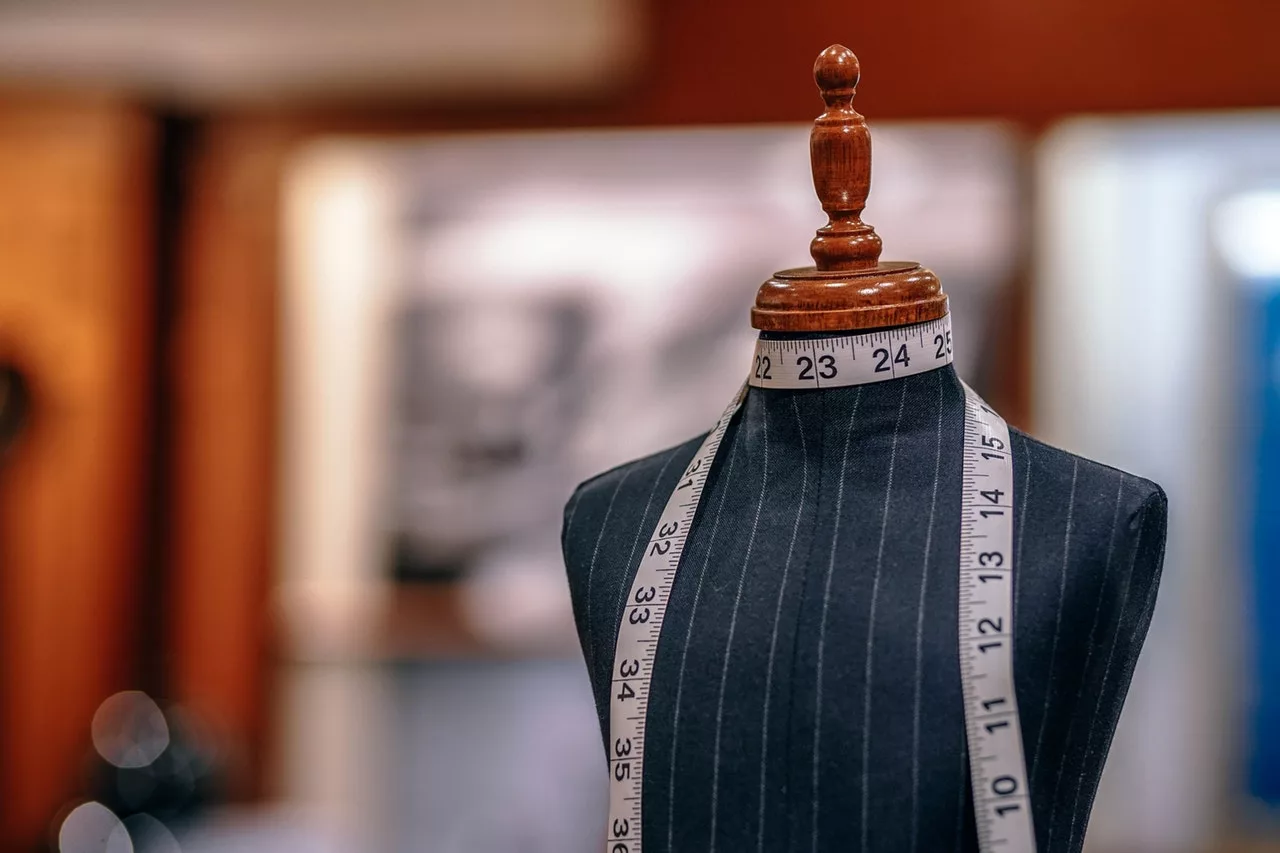Trends ebb and flow, but the eco-friendly clothing craze appears destined to become a mainstay. Sustainable fashion is dominated by small upstart labels, but as it continues to catch on, big-name brands are jumping on the bandwagon. Case in point: Fashion rental platform Rent the Runway launched a sustainable fashion subscription in October, and luxury label Gucci pledged to ditch all fur in its collections by the end of this year.
As preferences about sustainability, social impact, and animal welfare change among consumers, designers and innovators are rapidly developing new green fashion offerings in order to keep pace. These nine in particular are poised to disrupt the way clothes are made, marketed, and sold — and we couldn’t be happier.
1. Upcycled fabric
Designer Rachel Faller is taking eco-friendly fashion to a new level with her new company, Tonlé Designs. The Cambodia-based fashion house produces what it calls “zero-waste fashion” by upcycling discarded pre-consumer fabric from factories into apparel, jewelry, and bags. The team partners with Cambodian crafters to make sustainable fabric when factory leftovers are sparse.
Faller is not alone. A growing number of companies — from purpose-driven startups to luxury labels — are beginning to embrace upcycling. And with groups like the Ellen MacArthur Foundation looking to bring the circular economy into the fashion space, this trend looks here to stay.
2. Lab-grown leather
Genuine leather is no longer eschewed only by animal rights activists. Since the luxury material is produced with a heavy chemical cocktail and requires a whole lot of water and energy in the process, it’s also becoming a no-no among the Earth-friendly crowd. That’s why innovators are searching for eco-friendly leather alternatives that don’t harm animals or the Earth — and lab-grown leather may just be the future of your wardrobe.
Last year, New Jersey startup Modern Meadow unveiled a line featuring “biofabricated” cow-free leather. The brand’s process relies on genetic engineering to produce collagen, the building block for a super-lifelike leather material. While it’s not identical to cow skin, Modern Meadow’s founders say that’s not the point. Rather than imitate leather, they’re keen to entirely “reimagine” the material to go beyond its traditional physical limits, the team told the Atlantic last year.
3. Recycled activewear

Image credit: Girlfriend Collective
Seattle-based Girlfriend Collective is on a mission to prove that activewear can still be comfy and practical when it’s made from post-consumer products like recycled water bottles.
Plastic gym clothes may sound uncomfortable, but modern recycling processes allow feedstocks like bottles to be broken down and woven into knit fabrics, leaving behind a soft yarn. The trend started by small labels like Girlfriend Collective is now picking up steam among mainstream brands. Timberland, for example, recently partnered with the social enterprise Thread International to make clothes and shoes from plastic bottles collected from the streets of Haiti and Honduras.
4. Bacteria-based dyes
You may not realize it, but the dyes in your clothing are some of the biggest threats to the environment. Excess dyes run off into waterways, causing irreparable damage, and dying clothes requires a whole lot of water.
Boston-based Ginkgo Bioworks is working to address these issues with bacteria-based dyes. As the term suggests, these dyes are made from pigments secreted by bacteria, which could seriously cut down the amount of water that’s needed to dye clothing. These types of dyes are also naturally nontoxic, which makes them better for the planet.
5. Sustainable hosiery
Most hose and tights are made of nylon, which is a petroleum-based, non-biodegradable material that isn’t great for the planet. That’s why two eco-conscious designers developed Swedish Stockings, a collection of hosiery made with natural fibers and recycled yarn. Vogue magazine took notice of the company, calling it the “first ever sustainable hosiery brand.”
6. Synthetic spider silk
Traditional silk-making requires silkworms to be boiled, a process that’s not only pretty unethical, but also wasteful in terms of resources. If you love the super-soft and luxurious texture of silk but feel morally obligated to avoid it, we’ve got some good news. Researchers at Cambridge University claim to have developed a process for creating silk in an environmentally-friendly way.
The team’s artificial silk is made from a water-based material called hydrogel, plus a small amount of silica and cellulose. The result is a super-strong fiber that could even be used to improve the performance of bulletproof jackets and bike helmets.

Image credit: Norton Point Sunglasses
7. Ocean plastic fashion
Ocean pollution is one of the most serious problems plaguing our planet. When companies use the world’s seas as a dumping ground, microplastics and toxic chemicals seep into the environment and damage the ecosystem.
To combat this issue, SoulFace Apparel developed a line of post-consumer plastic and recycled fibers that don’t contain formaldehyde or other harsh chemicals. The brand launched in September and recycled more than 320 plastic bottles within a week of going live. Norton Point Sunglasses is taking the same approach with a line of stylish sun specs made from discarded ocean plastic. Even luxury designer Stella McCartney plans to jump on the trend with a new line in partnership with Parlay for the Oceans.
8. Food-based clothing
Innovators have long used rapidly renewable resources to create clothing—think: cotton and bamboo. Now, companies like Qmilk are taking it to a whole new level. This brand produces what it calls “the material of the future,” a unique biopolymer that’s made with the milk protein casein and can be used for clothing and upholstery. The material takes significantly less water and energy to produce than traditional fabrics, although it’s unlikely to win points among the animal welfare set.
9. New plant-based fibers
Plant-based fibers are preferred over synthetic ones when it comes to sustainability, hence the rise of organic cotton and bamboo apparel. Innovators are constantly on the lookout for new plant-based fibers to add to the list.
Last year, ethical entrepreneur Dr. Carmen Hijosa developed Piñatex, a natural textile made from pineapple leaves, and a company called Green Banana Paper launched a crowdfunding campaign to produce vegan wallets made from banana leather. These crafty new endeavors could help apparel manufacturers produce goods without draining the Earth’s most precious non-renewable natural resources.






